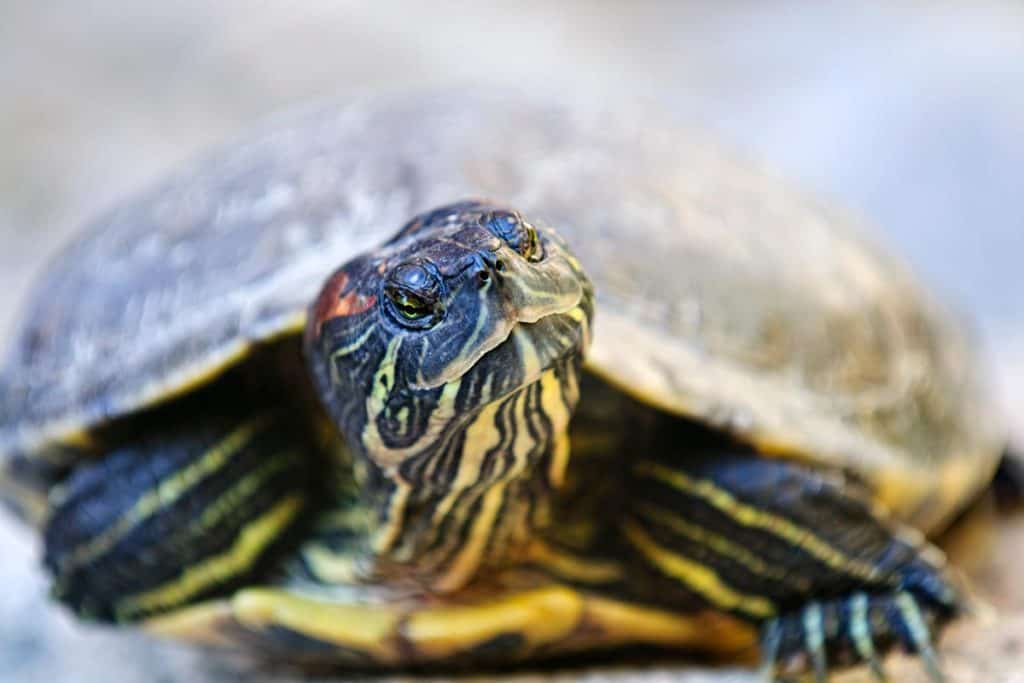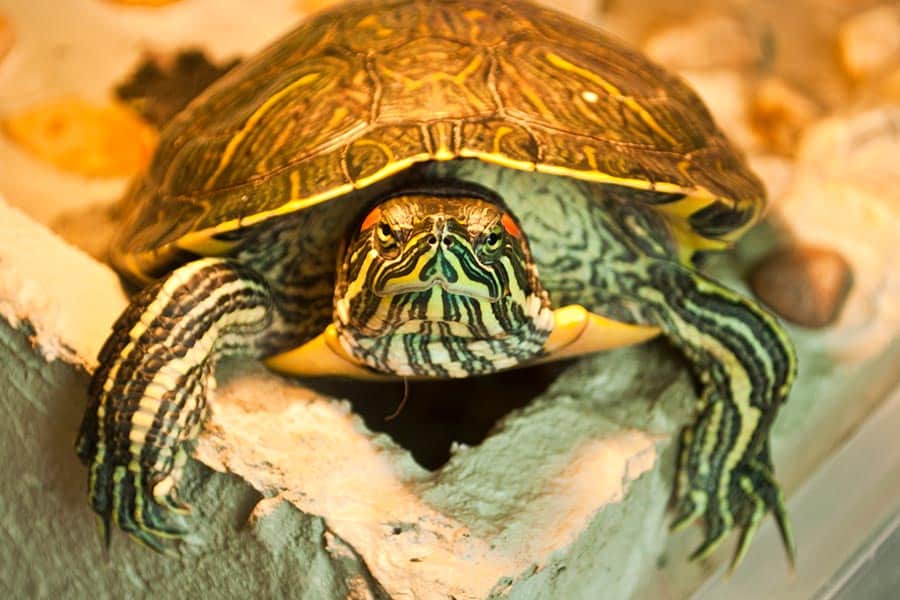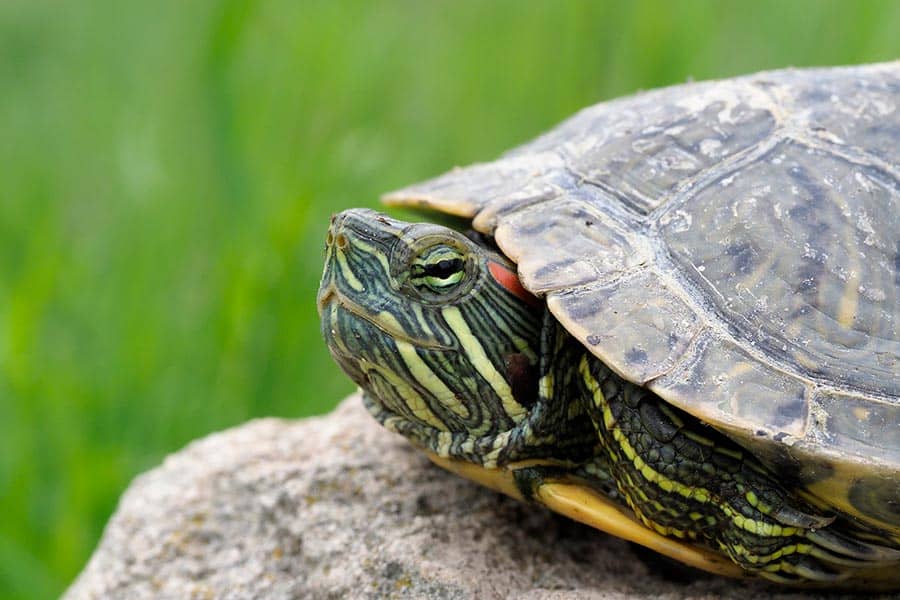Red-eared slider turtles make excellent pets thanks to their interesting and distinct personalities and adorably small size, but not everyone knows what to expect with these special animals. Do you know the lifespan of a red-eared slider turtle?
Perhaps you have a friend who has owned one of these popular turtles in the past, and they told you it only lived for a few years. However, these shortened lifespans are usually the result of the turtles not being cared for properly. When kept in the right environment and fed the right foods, these turtles can live for almost as long as you!
In this article, we will take a closer look at the average lifespan of the red-eared slider turtle both in captivity and in the wild. We will also go over the main care factors for these turtles, since proper care can make all the difference between having them around for just a few years versus a few decades.
Red-Eared Slider Lifespan in the Wild
In the wild, the average lifespan of a red-eared slider turtle is around 15 years. This number is quite low since young turtles are very vulnerable in the wild, and many are killed by their natural predators like raccoons, otters, fish, frogs, snakes, skunks, and birds.
Red-eared sliders in the wild are also very vulnerable to humans because they typically live in wetlands and ponds that are often heavily affected by human pollution and activity. Additionally, when red-eared sliders are forced out of their natural niches and into new habitats, they can have a devastating effect, as they eat pretty much everything–including many other native animals’ food sources.
If a red-eared slider reaches full maturity, they could live for 20 to 40 years in the wild. Again, however, long lifespans like these are fairly rare amongst wild turtles.
Red-Eared Slider Turtle Lifespan in Captivity
Like many other common pet reptiles, red-eared slider turtles tend to have longer lifespans on average in captivity since captive sliders are protected from their main predators and the principal threats to their habitat.
Generally, you can expect a properly cared for red-eared slider to live for around 20 to 30 years in captivity! What’s more, there are even known examples of these turtles living for as long as 40 to 50 years in captivity.
However, the sad fact is that most of these particular turtles aren’t cared for properly, and most red-eared sliders in captivity live for a meager 2 to 3 years due to improper care. Thankfully, there are plenty of things you can do as a pet owner to lengthen your turtle’s lifespan.
How to Maximize Your Red-Eared Slider’s Lifespan?
To ensure your red-eared slider lives a long and healthy life, you need to care for them properly. Below are our top tips to give your turtle the best chance in life.
Buy a Healthy Turtle
Of course, you’ll be fighting an uphill battle if you purchase a baby turtle that already has health problems. This can happen when you buy from irresponsible breeders who don’t bother to keep the babies in a proper habitat or if you buy an illegal wild turtle. Wild turtles are also more likely to pick up diseases in captivity. Always start by looking for a trustworthy breeder.
Before buying your turtle, examine it closely to ensure it is healthy. Baby turtles should be quite active and responsive, and if they aren’t, that is a red flag. Look at their eyes to make sure that they are clear, open, and not swollen, oozing, or discolored in any way.
Finally, examine their skin and shell for any signs of abnormalities. Shell deformities like pyramiding can be a sign of a significant lack of
Give Them Enough Space
One of the most common mistakes when caring for turtles in general is not giving them enough space. Since red-eared sliders are both semi-aquatic and semi-terrestrial, they need space both to swim and walk.
The overall tank size also is important. In addition to being stressful for the turtle, small tanks become dirty much more quickly–and turtles tend to produce more waste than you might imagine! Even with daily cleanings, your slider could still be living in a dirty, uncomfortable, and unhealthy environment if their enclosure is too small.
A baby red-eared slider will need a tank at least 55 gallons in size. Fully-grown adults will need twice that amount of room and should ideally live in a tanks of at least 120 gallons (or have access to an outdoor pond).
Find our recommendations for the best turtle tanks here.
Invest in a Powerful Filtration System
As stated above, red-eared sliders produce quite a lot of mess, so keeping their tanks tidy and hygienic can be a surprisingly time-consuming job.
In addition to keeping their water clean of their own mess, paying attention to the actual quality of the water your turtle is drinking and swimming in can make a big difference to their quality of life. It’s highly recommended to invest in a reliable filtration system to keep your turtle’s water clean and fresh.
To keep your slider’s enclosure as clean as possible, aim to purchase a filtration system for a tank around twice the size of the tank you are actually using. Clean and change the water on a regular basis.
Get the Temperature and Lighting Right From the Start
Your turtle is adapted to live in its natural environment, and when you take them out of that environment, their health is immediately at risk. To keep them healthy and happy in captivity, you need to do everything you can to simulate their native environment as precisely as possible.
The key to this is mimicking the right temperature and light levels. If you are keeping them indoors, they will need a full-spectrum light to help them generate the vitamin D that they need. This is especially important for turtles, as they need vitamin D to absorb
Since they are cold-blooded animals, red-eared sliders also need an external heat source to enable them to maintain their body temperature. They should have a
Provide a Diverse and Healthy Diet
It is true for all species that you are what you eat, so giving your turtle the right food will make a big difference in how long they live as well as the overall quality of their life.
Red-eared sliders are opportunistic omnivores, so they tend to have fairly large appetites and will eat pretty much anything that looks tasty to them! Despite this, though, you should make sure what you put in front of them is good quality in that it is as close to a natural, raw food diet as possible, and prioritizes what they would eat in the wild.
Your slider should eat a variety of aquatic vegetation, small fish, and small amphibians such as frogs. You can also give them small amounts of fruit and vegetables and various common feeder insects.
Remember, make sure you give them a varied diet rather than feeding them the same thing every day. Variation helps ensure they get the range of nutrients that they need to thrive.
While baby turtles should be fed daily to accommodate their rapid metabolisms, adult turtles can be fed every other day.
FAQs About Red-Eared Slider Turtles
How long can a red-eared slider turtle stay underwater?
Red-eared sliders love to swim, and they will commonly spend anywhere from around 10 to 30 minutes underwater when they go for a dip. They will sometimes even sleep underwater and can stay stationary underwater for up to 45 minutes at a time!
Can I release my red-eared slider?
If you can no longer care for your red-eared slider, you should never release them back into the wild. They are domesticated and thus not adapted to live in the wild. If released, they will probably have a very short lifespan, as they do not have immunity to many of the diseases and parasites they can come in contact with in the wild.
What’s more, when released into the incorrect environment, these little turtles can also have a devastating effect, since they can quickly imbalance an ecosystem. You are better off looking for someone else to take care of your turtle.
How long can a red-eared slider live without food?
If absolutely necessary, a red-eared slider could last around 2 to 3 months without food, but this would be stressful for them and likely greatly compromise their health. While they should eat every other day or so, they can survive a week or so without food on occasion and not suffer any long-term health effects.
The Verdict
Red-eared slider turtles can have difficult lives with fairly short lifespans in the wild. They have many predators as small turtles, and humans often encroach on and contaminate their natural habitats. Thankfully, if they make it through the challenging early years in the wild, these turtles can live 15 to 30 years.
Kept in captivity, they can live even longer–even as long as 40 to 50 years! The reason why most turtles don’t live quite that long in captivity is they simply are not properly cared for. This is why many are unable to carry on after about two years.
To ensure your pet turtle lives as long as possible, always make sure you care for them properly by being meticulous about maintaining their environment and giving them a healthy and varied diet.
Do you have any top tips for caring for a red-eared slider turtle? Share them with the community in the comments section below.




